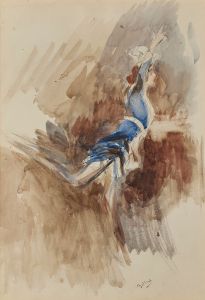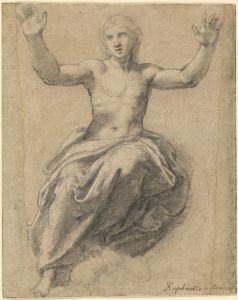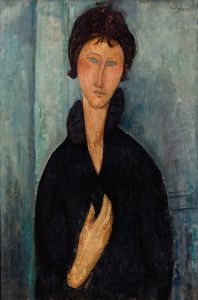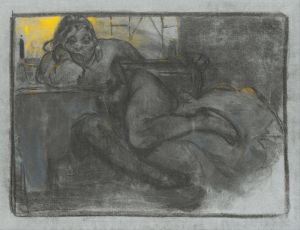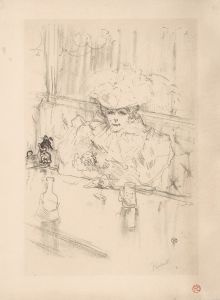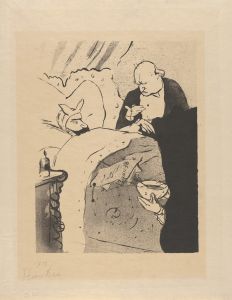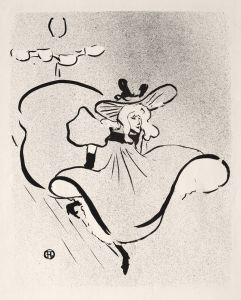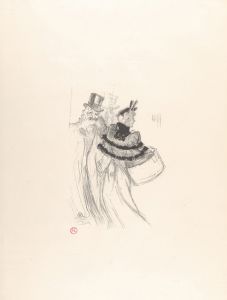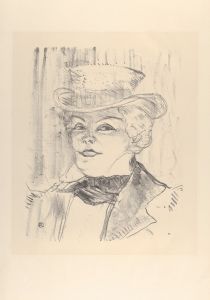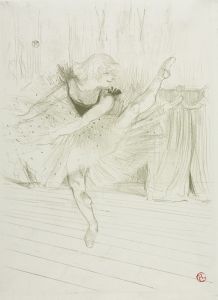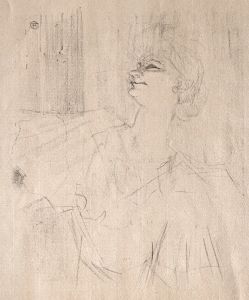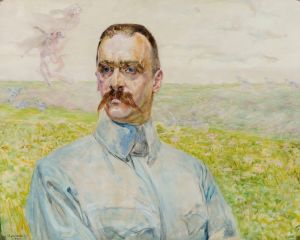
Cléo de Mérode
A hand-painted replica of Henri de Toulouse-Lautrec’s masterpiece Cléo de Mérode, meticulously crafted by professional artists to capture the true essence of the original. Each piece is created with museum-quality canvas and rare mineral pigments, carefully painted by experienced artists with delicate brushstrokes and rich, layered colors to perfectly recreate the texture of the original artwork. Unlike machine-printed reproductions, this hand-painted version brings the painting to life, infused with the artist’s emotions and skill in every stroke. Whether for personal collection or home decoration, it instantly elevates the artistic atmosphere of any space.
Henri de Toulouse-Lautrec, a prominent French painter, printmaker, and illustrator, is renowned for his depictions of the vibrant and often bohemian life of Paris in the late 19th century. Among his many subjects, Cléo de Mérode stands out as a notable figure. Cléo de Mérode was a celebrated French dancer and a prominent figure in the Belle Époque era, known for her beauty and grace. Toulouse-Lautrec's portrayal of her captures the essence of her charm and the cultural milieu of the time.
Toulouse-Lautrec was born into an aristocratic family in 1864, but his life was marked by physical challenges due to a genetic disorder that affected his bone development. Despite these challenges, he became a central figure in the Post-Impressionist movement, known for his innovative use of color, line, and composition. His works often depicted the lively nightlife of Montmartre, a district in Paris known for its cabarets, cafes, and dance halls.
Cléo de Mérode, born in 1875, rose to fame as a dancer at the Paris Opera. Her beauty captivated the public, and she became a muse for many artists of the time. Her image was widely circulated in photographs and postcards, making her one of the first modern celebrities. Her association with Toulouse-Lautrec is significant as it highlights the intersection of art and popular culture during the Belle Époque.
The painting "Cléo de Mérode" by Toulouse-Lautrec is a testament to his ability to capture the personality and allure of his subjects. While specific details about this particular painting are scarce, it is consistent with Lautrec's style, which often emphasized the individuality and character of his subjects through expressive lines and bold colors. His portraits are known for their psychological depth, offering viewers a glimpse into the lives and personalities of the people he depicted.
Toulouse-Lautrec's work with Cléo de Mérode reflects his broader interest in the performers and personalities of Parisian nightlife. He was a regular at venues like the Moulin Rouge and the Folies Bergère, where he observed and sketched the dancers, singers, and patrons. His art provides a vivid record of the era, capturing the spirit and energy of a time when Paris was the cultural capital of the world.
The relationship between Toulouse-Lautrec and Cléo de Mérode is emblematic of the artist-muse dynamic that was prevalent during the period. Artists like Lautrec were drawn to performers who embodied the glamour and excitement of the Belle Époque, and in turn, these performers gained additional fame through their portrayal in art.
In summary, Henri de Toulouse-Lautrec's depiction of Cléo de Mérode is a reflection of his artistic style and the cultural context of late 19th-century Paris. While specific information about the painting itself may be limited, the broader context of their association provides insight into the vibrant artistic and social scene of the time. Toulouse-Lautrec's work continues to be celebrated for its innovative approach and its ability to capture the essence of an era that was defined by its creativity and exuberance.





